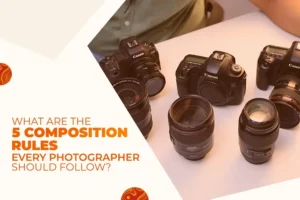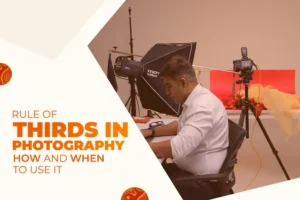All You Need To Know About Depth Of Field In Photography

When you take a picture, you’re like a storyteller, guiding people’s eyes to what’s important. There are tools to help with this storytelling, and one is called depth of field (DoF). In this blog we will see what is DoF in photography, what major factors affect the depth of field in photography, how can you add and decrease it in your pictures and then we will see some examples, so let’s start with the basics
What's Depth Of Field (DoF) In Photography?
Depth of field (DoF) in photography is like the part of your picture that’s really clear. It’s where things are in focus. Imagine it as the space between the closest and farthest things that look sharp in your photo.
To explain it simply, DoF is just how much of your picture looks sharp. For example, think about taking a photo of two things that are different distances from you. If only the space between those two things is clear, and everything else is blurry, that space between them is your depth of field.
Two Major Types Of DoF (Depth Of Field) In Photography
When it comes to depth of field, there are two main types: shallow and deep. Each type brings out different aspects of your image and offers unique benefits.
What Is A Shallow Depth Of Field?

In this type, the distance between the closest and farthest elements in focus is very short. Only a small portion of your image appears sharp and clear, while the rest is beautifully blurred. Achieve this effect by using a large aperture.
Keep in mind, though, that using a large aperture might lead to overexposure. To prevent this, try using a faster shutter speed and lower ISO.
What Is A Deep Depth Of Field?
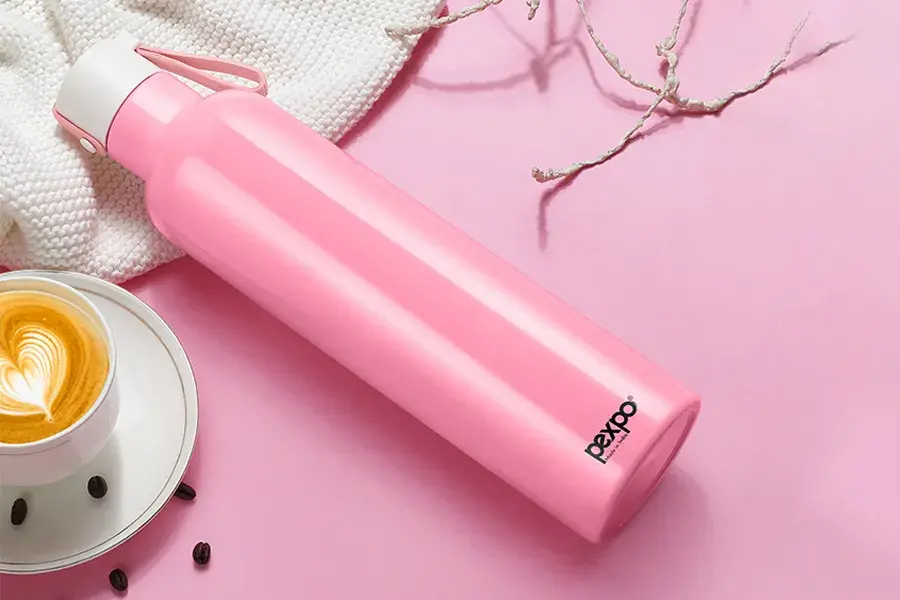
Also known as a large depth of field, this type makes sure both the background and foreground are sharp and detailed. Every element in your frame is clear and visible to the viewer.
To achieve a deep depth of field, set your aperture to f/16 or lower. For even greater clarity, position your camera as far away from the subject as possible.
By understanding these two types of depth of field, you can enhance your photography and convey different moods and messages through your images.
Why Use DoF In Photography?
Well, it’s like having a superpower as a photographer! It lets you control what’s sharp and what’s blurry in your photo, guiding people’s eyes exactly where you want them to look.
For example, when clicking landscapes, you might want everything to be crystal clear. In that case, you’d use a small lens aperture like f11 or f16.
But, if you want to add some cool depth to your pic, you can play around with it! Imagine having some things up close blurry, like leaves in the foreground. It gives your photo a 3D feel as if the viewer is peeking through those leaves at the main subject. Cool, right? To get this effect, just use a wider lens aperture, like f/2.8 or f1.4.
What Factors Affect Depth Of Field (DoF) In Photography?
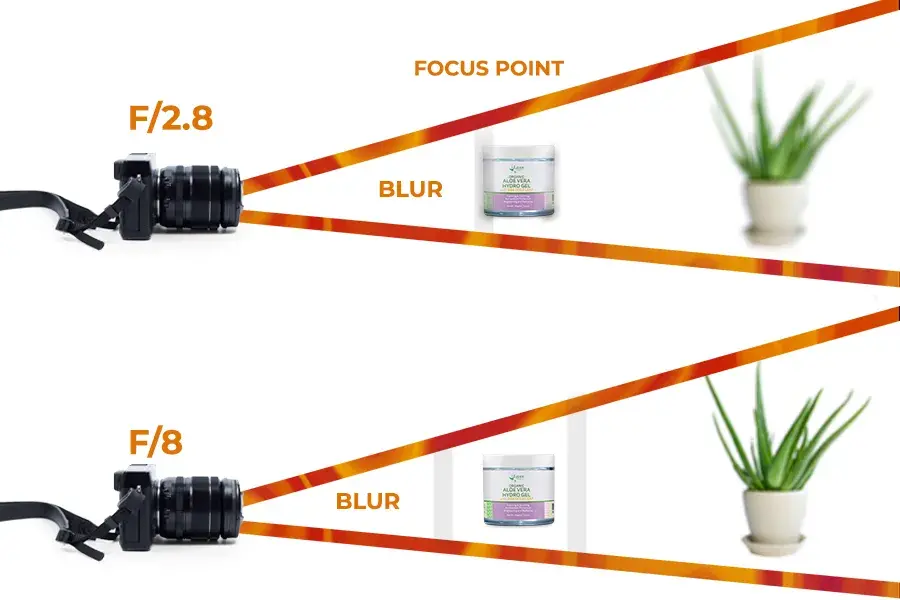
Many factors impact the depth of field in digital photography, whether you’re using a fancy DSLR or just your smartphone. These factors include focal length, aperture, camera-subject distance, and sensor size.
Understanding these factors and how to control them with your camera settings gives you the power to adjust the depth of field. You can make your photos super sharp or give them a dreamy, soft focus. It’s like adding different flavours to your photography!
How Does Focal Length Play A Role?
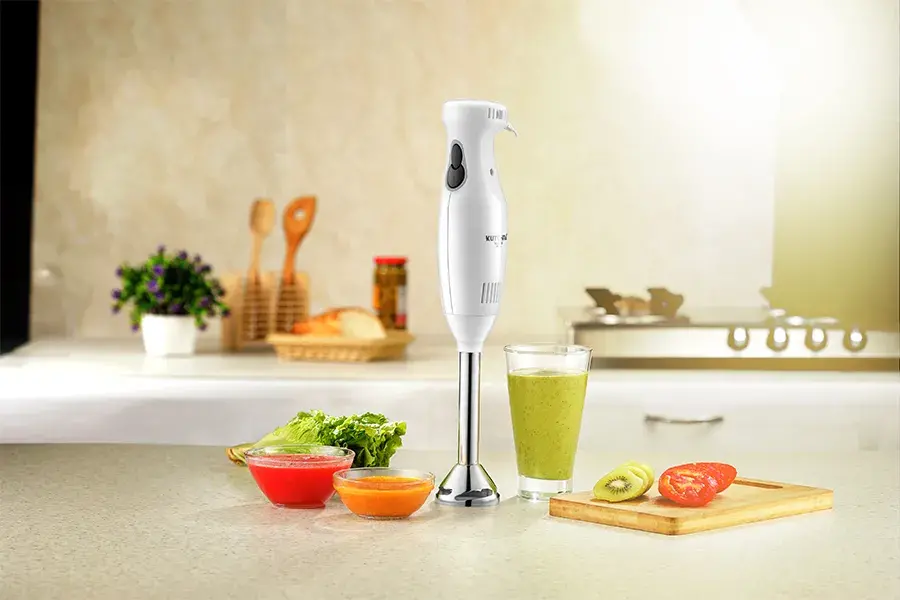
The length of your camera lens, known as focal length, affects the depth of field. Longer focal lengths mean a shallower depth of field, while shorter ones mean more of the photo will be in focus.
Typically, wide-angle lenses have a bigger depth of field than zoom or telephoto lenses. Zoom lenses, though, give you flexibility with different focus distances, so they’re pretty versatile.
In photography lingo, the “f” in your camera settings stands for focal length. A higher “f” number means you can focus on things far away. And speaking of “f,” let’s talk about aperture, the next big thing in depth-of-field photography!
How Does Aperture Affect Depth Of Field?
Understanding how aperture impacts the relationship between your subject and its background is a big step toward improving your photography skills.
Aperture refers to how big the opening is that lets light into your camera. It’s measured in F-stops, and here’s the tricky part: the higher the F-stop number, the smaller the opening. So, a small “f” equals a big aperture.
For instance, an aperture of f2.8 lets in twice as much light as f4, and a whopping 16 times more light than f11. But here’s the cool part: aperture also affects depth of field. A bigger opening means a shallower depth of field, while a smaller opening keeps more of your image in focus.
How Does Camera-Subject Distance Affect DoF In Photography?
This one’s simple: the distance between your camera and your subject affects depth of field too. The closer you are to your subject, the shorter the depth of field.
Imagine you’re standing eight feet away from a wall with your camera. If your subject is right up against the wall, your depth of field is basically zero (not what you want). But, if your subject moves closer to you, let’s say within a foot, suddenly your depth of field increases, and you’ll get that cool effect you’re after in your image.
How Does Sensor Size Influence Depth Of Field In Photography?
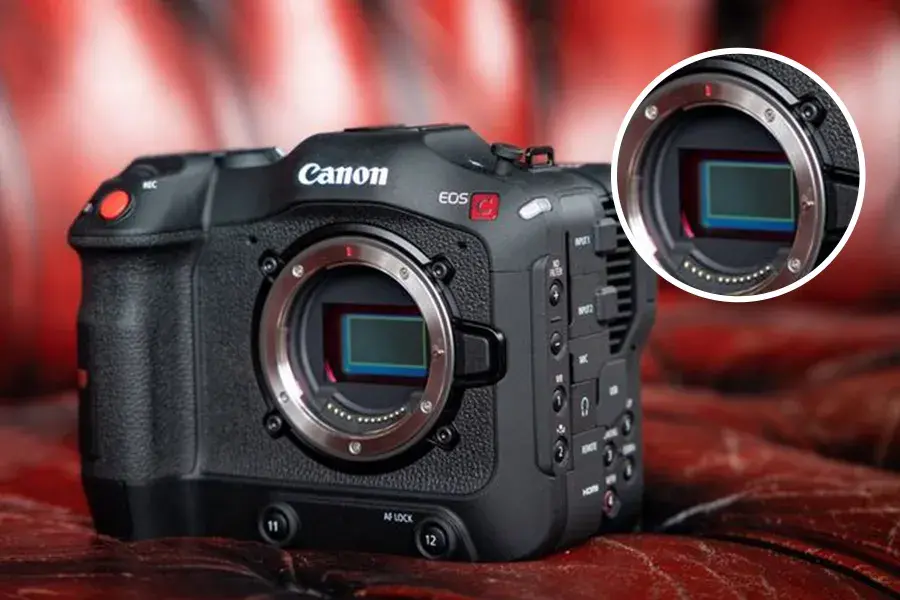
The size of your camera’s sensor is another key player in the depth-of-field game. When everything else—like aperture, focal length, and camera-subject distance—is constant, a bigger sensor means a shallower depth of field. On the flip side, cameras with smaller sensors usually have larger depths of field.
Now, sensors come in all sizes, depending on your camera model. Full-frame sensors are big, while newer APS-C sensors are smaller. Choosing a camera with the right sensor size is crucial since it directly impacts your photo quality and creative expression.
Does Shutter Speed Make A Difference In DoF?
Actually, nope! Shutter speed doesn’t mess with your depth of field.
Sure, tweaking your shutter speed might give you a different look, but what’s really happening is your aperture adjusts to balance the new amount of light. So, shutter speed’s off the hook when it comes to depth of field.
How To Add Depth Of Field To Your DSLR Photos In 4 Simple Steps
Ready to dive into the world of depth of field? Let’s get started with your DSLR camera!
- Choose Your Subject: Grab any small object you like and place it close to your camera. It could be anything—a toy, a flower, or even your favorite mug.
- Set Your Camera: Switch your camera to Aperture Priority mode. This lets you control the aperture while the camera takes care of the rest. Now, open up your aperture as wide as it’ll go. Aim for f/2.8 or wider. Once you’ve set your aperture, focus on your subject.
- Snap Away: Take your first shot. Then, adjust your aperture to a slightly smaller setting, like f/5.6, and snap another pic. Finally, close your aperture even more, maybe to f/16, and take one last shot.
- Compare Your Photos: Now, check out all three pics. Notice how with a smaller aperture (that higher number f-stop), more of the photo is in focus. It’s like magic!

Download The Beginners Handbook For Product Photography
This handbook is your go-to guide for unleashing your creative potential. Don’t miss out – grab your FREE copy now!
How To Create A Shallow Depth Of Field In Your Photos
If you’re aiming for that dreamy blurred background effect in your photos, follow these simple steps to decrease the depth of field:
Open Up Your Aperture: Start by using a wider aperture setting on your camera. This lets more light in and makes it easier to achieve that shallow depth of field. So, dial in a lower f-stop number, like f/2.8 or f/4.
Grab a Telephoto Lens: Opt for a telephoto lens if you have one. These lenses, with their longer focal lengths (those bigger f numbers), are perfect for isolating your subject and blurring out the background. They’re not just for distant shots—you can also use them for stunning close-up portraits with a beautiful bokeh effect.
Get Closer: No telephoto lens? No problem! Simply move physically closer to your subject. By getting up close and personal, you can mimic the effects of a longer lens and achieve that lovely shallow depth of field you’re after.
With these tricks up your sleeve, you’ll be capturing captivating photos with a dreamy background blur in no time. Happy shooting!
Wanna know more about cameras and lenses for product photography? Watch here in our premium video: How To Choose The Perfect Camera And Lens For Photography
Examples Of Depth Of Field In Product Photography

FAQs
1. What is the meaning of depth of field in photography?
Depth of field in photography refers to the range of distance in a photo where objects appear sharp and in focus. It determines how much of the image is clear and how much is blurred.
2. Why do photographers use depth of field?
Photographers use depth of field to control which parts of the image are in focus and which are blurred. It helps direct the viewer’s attention to specific subjects or elements in the photo, creating depth and visual interest.
3. What is the difference between aperture and depth of field?
Aperture is the opening in the lens that controls the amount of light entering the camera. Depth of field, on the other hand, is the range of distance in the photo where objects appear sharp. While aperture affects depth of field, they are not the same thing. Adjusting the aperture can change the depth of field in a photo.

